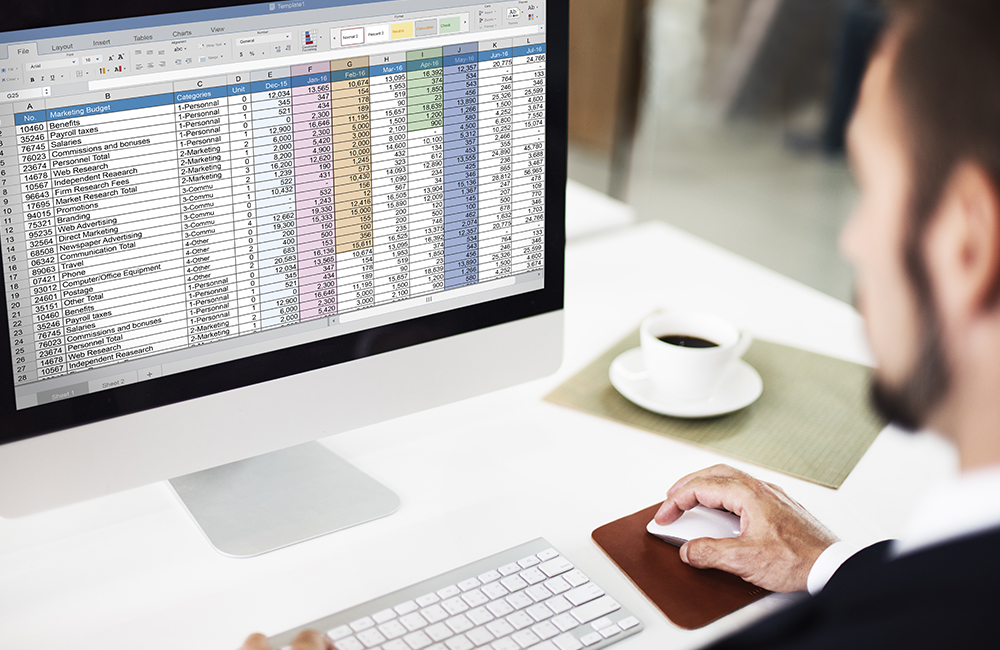
Using Excel to Plan Your Annual Report Design Project
Oh, man. It’s annual report time and you are tasked with keeping all of the moving parts zipping along with efficiency.
You may be secretly dreading this process because, as Australian communications specialist Cinden Lester points out, “Producing an annual report can feel like managing a room full of toddlers. There will be cajoling, possibly even pleading, threatening or bribing. There will be explaining, reminding, anticipating, interpreting, monitoring and problem-solving. A tantrum or two (is) not out of the question.” That’s a pretty good analogy.
So how do you prevent those temper tantrums? By making sure everyone is on track, for starters. If you’re at the project planning phase of producing an annual report, an Excel spreadsheet is a fantastic way to keep your project in scope and on a timeline. You can use a simple project management spreadsheet or something more complicated such as an Excel project management dashboard. The nice thing about Excel is that you can convert your data into PowerPoint slides if you’re planning on presenting information to either your client or executive suite.
What steps do you need to take when entering data into an Excel spreadsheet? Read on.
1. Figure Out What Type of Spreadsheet You Need
There are different types of spreadsheets you can create depending on how much and what type of information you need to stay on top of when it comes time to draft your project plan.
You can have a project tracking spreadsheet that tracks each task’s progress against the original plan. You can also have a spreadsheet that keeps you informed on how things are progressing along on the critical path only. You can also have a milestone tracker to monitor your performance against important events or deadlines along the way.
Whatever you use — one spreadsheet or a combination of spreadsheets — make sure that it works for you and allows you to effectively manage what needs to be done.
2. Come Up with a Detailed Project Plan
For this step, you’ll need to trace your deliverable backward from the project’s deadline: the date for which your report needs to be published or presented to management. If you don’t have a hard deadline, it’s still useful to know how long tasks will take to complete in order to come up with a suggested deadline. Either way, knowing when you need to be finished along the way is a good thing. It’ll help you get moving on the report.
Make sure you have enough time plus padding for problems that may crop up along your critical path for each step of producing the report. If you’re planning on publishing the report in French, you’ll need to factor in how long it will take for the text to be translated and revised, and how much extra time your graphic designer will need to make stylistic adjustments to make the French fit.
If you’re not sure about how much time it’ll take for each step of production, ask around. Get people to tell you how much time they think they’ll need. To make sure you have enough leeway, double the time they say it’ll take them so you don’t have your back up against the wall if something on the project falls through.
From this information, you can draft a project plan and schedule.
What Components Will Make Up My Project Plan?
You can get very detailed with the items that will make up your project plan. You might need a high level of detail for a complicated annual report. Things you can put into your project plan include the time it takes to:
- Request quotes and organise contracts.
- Consult with executives about the theme, tone and key messages.
- Identify who will write parts of the report and request contributions.
- Write and edit the content.
- Check facts and make changes (you should anticipate getting a lot of feedback from different levels of your organization’s hierarchy).
- Get internal and external approvals.
- Identify images and photographs to be used.
- Design the report.
- Proofread the report.
- Prepare the online version, if applicable.
- Print the report.
- Distribute the report.
- Debrief stakeholders on the report.
With your Excel spreadsheet, set out who has to do what and when. This will help you keep track of all those aforementioned moving parts.
3. Plug In the Numbers
When you have your spreadsheet up and running and have your project plan figured out, start putting in all of the data you need to track the project. It’s as simple as that. Excel will do all of the visual presentation work for you.
Use Cyan’s Excel Annual Report Tracking Spreadsheet
If you’re still not sure what spreadsheet to use, Cyan Solutions has, well, a solution for you. You can download our Excel workbook that will help you stay on track of projects. We are hopeful that this spreadsheet will help you meet your goals, and make managing your annual report project much more streamlined and successful.
Discover what Cyan can do for you
We want to get to know you better so we can understand what services are going to help you meet your goals.
